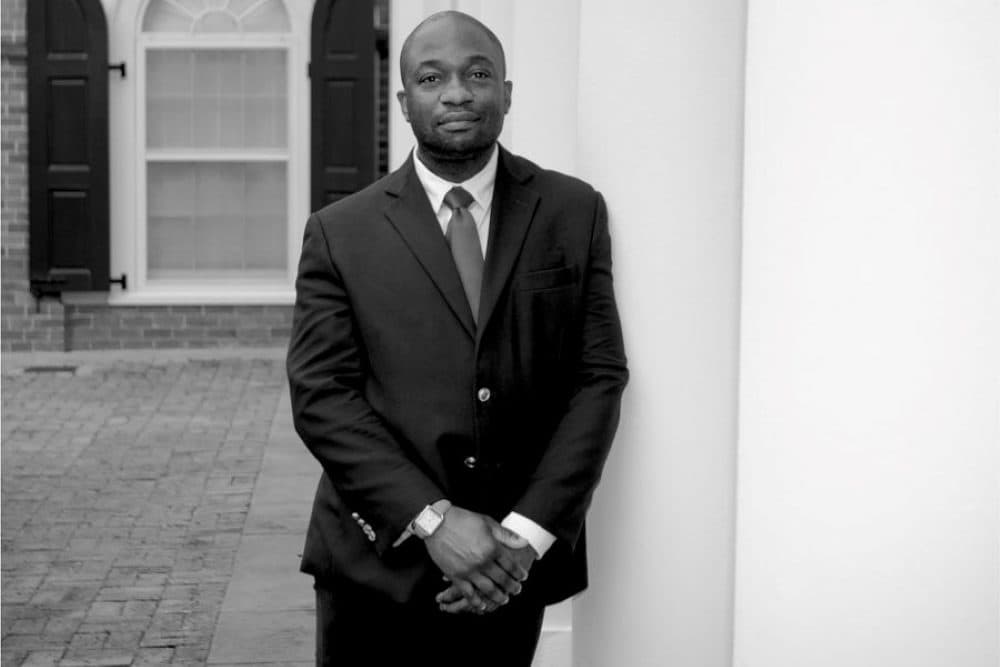Advertisement
Harvard Art Museums Appoints New Curator Of American Art

Horace Ballard has fostered connections between art and the public since he was 17 years old, working for a little extra pizza money, but he never planned to be a curator. It wasn’t until he worked as a gallery teacher while completing his master’s degree at Yale that he decided to forge a career from his knack for making art come alive. “Galvanizing people of all ages to encounter a work of art through their senses and adding a little bit of context here and there — just to further their looking — that’s what a curator does,” says Ballard, who was recently selected as the new Theodore E. Stebbins Jr. Associate Curator of American Art at Harvard Art Museums. “We tell stories about culture and ideas and people, and I thought: ‘Maybe I can do this.’”
Ballard is set to begin his role at Harvard in September — where he’ll oversee the museums’ collection of pre-20th-century American paintings, sculpture and decorative arts — and to it, he brings a vast repertoire of experience at institutions like the Williams College Museum of Art, Rhode Island School of Design Museum and the Fralin Museum of Art at the University of Virginia. The American art aficionado is especially excited to continue his work at academic museums, which he considers cornerstones of multidisciplinary thinking, intellect and experimentation.
“I deeply believe that academic museums have the ability to actively demonstrate the ways by which beauty leads us to justice, the ways by which beauty and all of its aesthetic messiness and capacity and all of its sumptuous subjectivity garners our attention,” says Ballard. “We don’t stop there at academic museums. We ask why and how and where else have you seen this and what could be if an artist had made a choice.” The curator feels academic museums build empathy in more poignant ways than civic museums, as their collections are designed for students and scholars — the engines behind guiding the public’s attention.
Harvard has built its art collection for centuries and, during his time there, Ballard aims to expand it with intention, actualizing oft-overlooked diverse perspectives. For example, the curator plans to foster a greater understanding of how Mexican and Canadian design shapes American art, broadening our consideration of indigenous artisans. Most of all, Ballard hopes visitors come away with a “refined question” — one that can be burnished through conversation and study — sparking further exploration. “I have very little desire to be the final word,” says Ballard.
This practice of art sparking questions hearkens back to Ballard’s childhood, where he moved around frequently in Pennsylvania, Virginia and North Carolina. His parents always looked for a way to make him comfortable, and museums became the solution after a “life-changing” school field trip. “No matter where we went, when there was a museum, mom and dad took me. The conversation was always, ‘What are you seeing? How are the objects relating to the space? Are you thinking about history?’...That sense of care, that sense of intention, the relationship between objects and ideas and space has long been a part of me.”
While the origin of Ballard’s love for art is clear, his interest in American art is often scrutinized. “The greatest challenge in my career has been cultivating a clear sense of my own voice when there are many moments when I feel that I have to prove that an African American queer person can do 17th and 18th-century American art,” says Ballard. Especially in this current time of reckoning, the curator says he endures questioning around choosing past over present. Knowing the answers to those questions — even within himself — can prove difficult. Yet, when Ballard views an 18th-century creole portrait, he sees a friction, a sense of becoming, the search for what it is to be American play out on the canvas. He understands the limits between whiteness and Blackness, male and female, and unpacks how that’s represented. He uses his knowledge to guide today’s activists and thinkers to an idea’s origin and journey into the national consciousness. “Justice and ethics of attention are always at the fore of what I do, no matter what time period,” says Ballard. “I deeply believe that my role in this cultural moment is to be a truthful, authentic voice on how the past is not always fixed.”
At his core, Ballard believes art provokes change. And he believes that change should begin in museums. “Museums by default are not set up to give consolation, but more than half of the country has never seen themselves on the gallery wall and that must stop,” says Ballard. “We have to reckon with that fact and the way we do that is to invite people to sit with us in anger, in awkward silence, in a restless peace, and then we start asking some questions.”